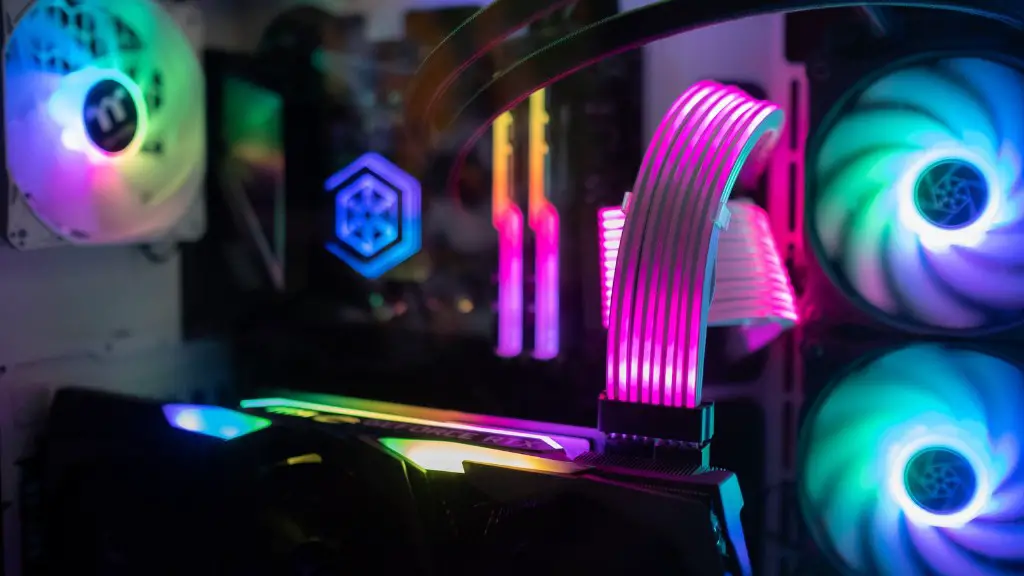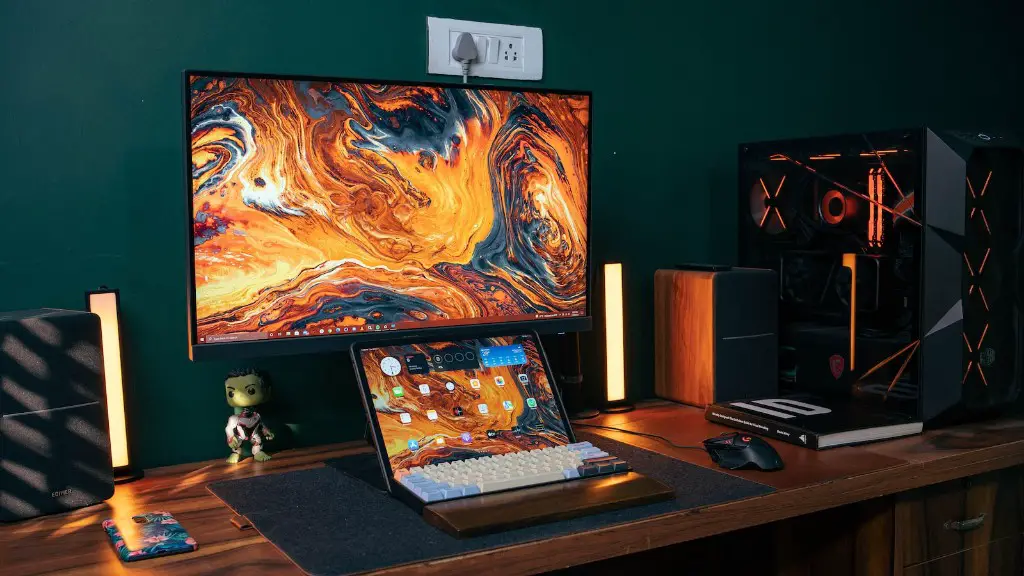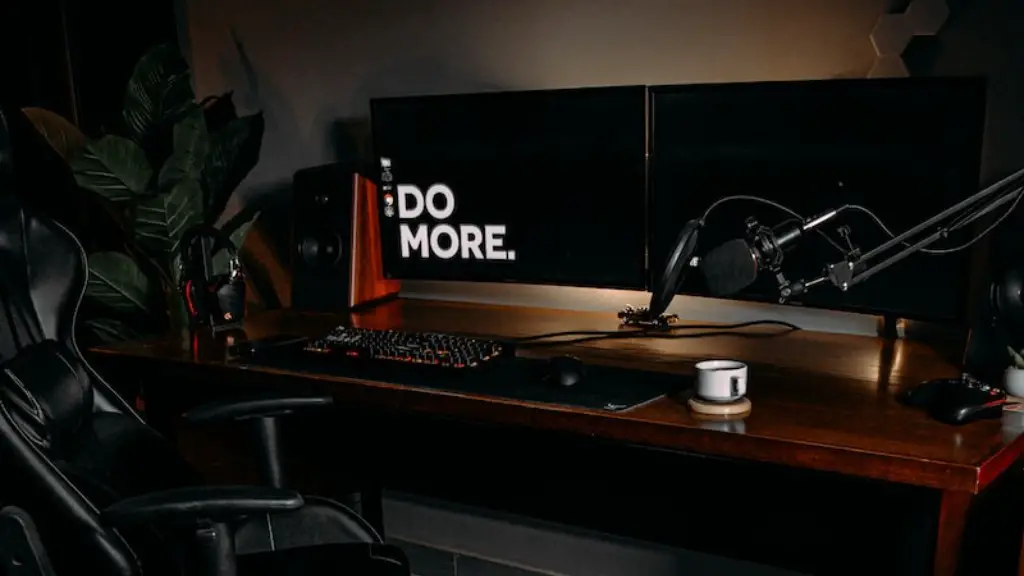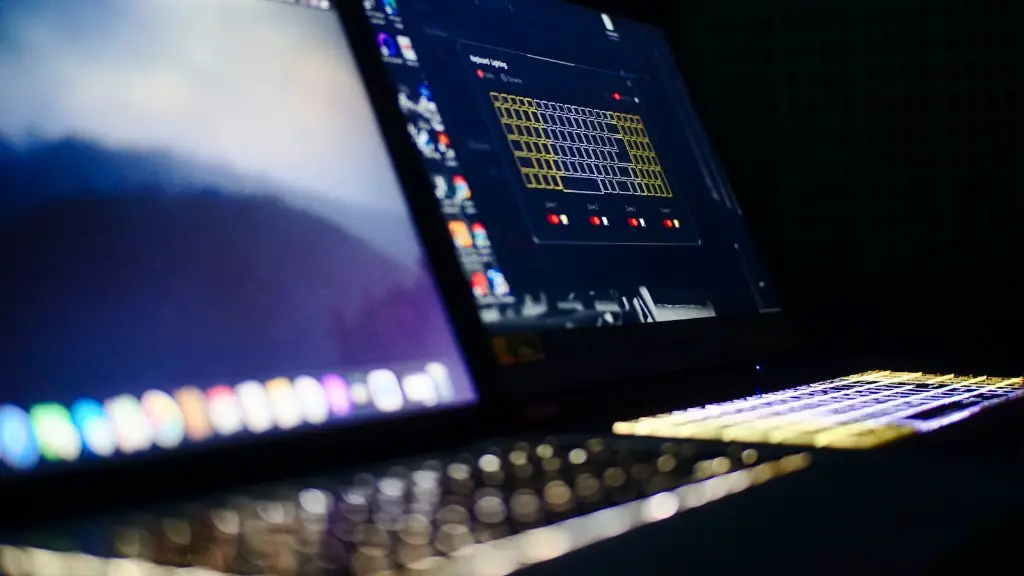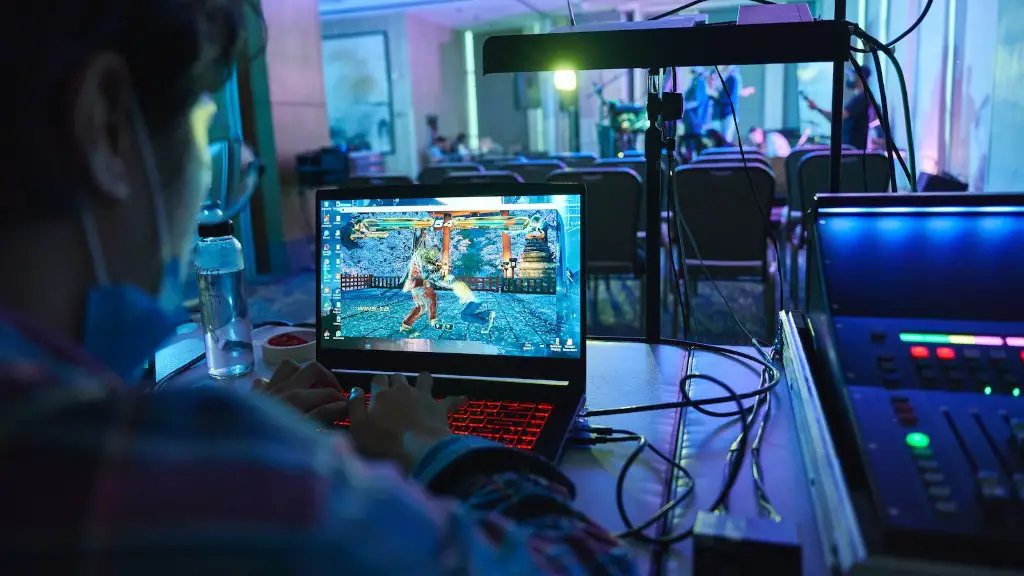When deciding on a monitor for gaming, size is an important factor to consider. The general consensus is that the bigger the screen, the better the experience. But how big should gaming monitors be? This is an incredibly subjective decision, but there are a few guidelines and tips that you can use to help make the right decision.
The size of the monitor depends on the type of game you are playing and how far away you sit. Generally, the closer you sit, the larger the monitor will need to be in order to provide an optimal gaming experience. This also depends on the resolution of the monitor, as larger resolutions make small monitors look better, compacted. If you are gaming from a distance, a TV can be used as opposed to a computer monitor. This will generally provide better image quality and a larger viewing area.
For those who game from a closer distance, the size of the monitor should range from 24 to 35 inches. If the monitor is smaller than this, then the details of the game may be lost. Larger monitors will use up more of your desk space, but you’ll also be able to see more of the details in game. For competitive gaming, 27 inches is considered the sweet spot.
No matter how big you go, all gaming monitors should have at least a 1080p resolution. This is especially important for gamers who sit close to their monitors, as higher resolutions will make the image sharper and more enjoyable to watch. Monitors with 1440p or 4K resolutions are great, but they come at a cost, both in terms of financial cost and performance. If you have a powerful enough PC to run 4K games and you have the budget to purchase a monitor, then go ahead.
In addition to size and resolution, other features such as refresh rate, response time, and color accuracy should also be taken into consideration. All of these features should be considered based on your budget, as well as the type of game you are playing. Monitors with high refresh rates and low response times are great for competitive gaming, while those with excellent color accuracy are better for single-player experiences.
Finally, keep in mind that the size of your gaming monitor should match the size of your desk space. Monitors that are too large will take up unnecessary space and become a distraction. Additionally, ensure that your monitor can be correctly positioned, as ergonomics is important for continued gaming sessions.
Monitor for First person shooter games
First-person shooter (FPS) games such as Call of Duty, Overwatch, and Battlefield require high-performance monitors that are both big and sharp. For FPS gaming, a 24-inch monitor will work well but only if it has a 1080p resolution or higher. This is because the small size of the monitor will make the image look compressed, so a higher resolution is needed to make all the details visible. Monitors with a 4K resolution are ideal for FPS gaming, as the picture will be sharp and detailed at closer viewing distances.
In terms of refresh rate and response time, monitors should be at least 144Hz with a 1ms response time. For competitive play, a higher refresh rate is ideal, as it will make the image look smooth and detailed. Additionally, you may want to consider a monitor with variable refresh rates (VRR) technology. This will help ensure that your monitor runs at the best frame rate possible, providing you with an edge in the game.
For color accuracy, a gaming monitor should cover at least 96% of the sRGB color gamut. For FPS games, you’ll want to make sure that the monitor is able to accurately reproduce dark shades, as this will provide you with more detail and accuracy when aiming. If you have some extra budget, you can opt for a monitor with extended color gamuts, such as Adobe RGB or DCI-P3.
Finally, the size of the monitor is important for FPS gaming. Monitors that are too small will make the game look compressed, while those that are too big may be distracting. A 27-inch monitor will offer plenty of screen space and make the game look sharp and detailed, without taking up too much space.
Monitor for RPGs
Role-playing games (RPGs) such as The Witcher 3 and Dragon Age offer an immersive and expansive experience. To get the most out of these types of games, a larger monitor such as a 27- or 32-inch with a 1440p resolution or higher should be used. This will ensure that all the details in the game are easily visible and makes the world feel larger and more immersive.
In terms of refresh rate and response time, the monitor should run at least 60Hz with a 1ms response time. This will ensure that the image looks smooth and that there is no lag when playing. Additionally, a monitor with low input lag will make the world feel more responsive and will help you stay focused on the game.
Color accuracy is also essential for RPG gaming. Monitors should have at least 98% of the DCI-P3 color gamut for the truest color representation. As these games take place in fantastical worlds with vibrant colors, a monitor with excellent color accuracy will make it more enjoyable to explore these lands.
As for size, a 27-inch monitor should be sufficient. This size offers plenty of screen real estate and will provide enough detail while also not taking up too much space. Larger monitors may be distracting, as they take up more desk space and can be overwhelming to look at.
Monitor for Strategy Games
When it comes to strategy games such as Civilization and Age of Empires, size and resolution are very important. As these games require a lot of on-screen action and information, a larger monitor with a higher resolution will provide an optimal experience. The ideal size for a strategy game monitor is 27- to 35-inches and should have a resolution of 1440p or 4K.
In terms of refresh rate and response time, a monitor should be at least 60Hz with a 1ms response time. Monitors with higher refresh rates may be necessary for gamers who want a smooth image, as strategy games are often fast-paced. Additionally, you may want to opt for a monitor with variable refresh rate technology, as this will help reduce input lag.
Color accuracy is also important for strategy games. Monitors should have at least 99% of the Adobe RGB color gamut for accurate color representation. This ensures that all the details are visible and that colors look as they should in game. Monitors with HDR capabilities may also be desirable, as these games often have a lot of contrast and dark details.
Finally, the size of the monitor should fit the size of your desk space. A 27-inch monitor is the sweet spot and offers plenty of screen space without being too distracting. If you have more space, you can go for a larger monitor. Just keep in mind that larger monitors may take up too much space and be uncomfortable to look at for long periods of time.
Monitor for MMOs
Massively multipayer online (MMO) games such as World of Warcraft and Guild Wars require a monitor with a large screen size and a high resolution. To maintain the detail of the game, a monitor with a 4K resolution and at least 27-inches is recommended. With a 4K monitor, the image will be sharp and the details of the game will be visible even at closer viewing distances.
In terms of refresh rate and response time, the monitor should run at least 144Hz with a 1ms response time. A higher refresh rate ensures that the image looks smooth, while a fast response time ensures that the game will be responsive. Monitors with variable refresh rate technology are also desirable, as this will help reduce input lag.
For color accuracy, the monitor should be able to reproduce at least 95% of the sRGB color gamut. This will allow for accurate color representation and will make the world look as it should. If you have extra money to spend, you can also opt for a monitor with wider color gamuts, such as DCI-P3 or Adobe RGB.
Finally, the size of the monitor should fit the size of your desk. A 27-inch monitor is the sweet spot, but if you have enough space, you can go for a larger one. Just bear in mind that larger monitors may take up too much space and become a distraction.
Monitor for Racing Games
Racing games such as Forza and Grid require precise control and fast response times. To get the most out of these games, a high-performance monitor with a large screen size and a high resolution is needed. A monitor with a 1440p resolution and at least 32-inches is recommended for racing games.
In terms of refresh rate and response time, the monitor should be at least 144Hz with a 1ms response time. This will ensure that the images are smooth and responsive, allowing for precise control. Monitors with variable refresh rate technology may also be beneficial, as it will help reduce input lag.
For color accuracy, a gaming monitor should reproduce at least 99% of the sRGB color gamut for accurate color matching. This will ensure that the colors in game look as they should and that the environment looks immersive. Additionally, you may want to consider a monitor with HDR capabilities, as this will make the colors more vibrant and true to life.
Finally, the size of the monitor should match the size of your desk. Ideally, you’ll want to opt for a 32-inch monitor, as this will provide plenty of screen space and will also not take up too much desk space. Monitors that are too large may be overwhelming and be a distraction.
